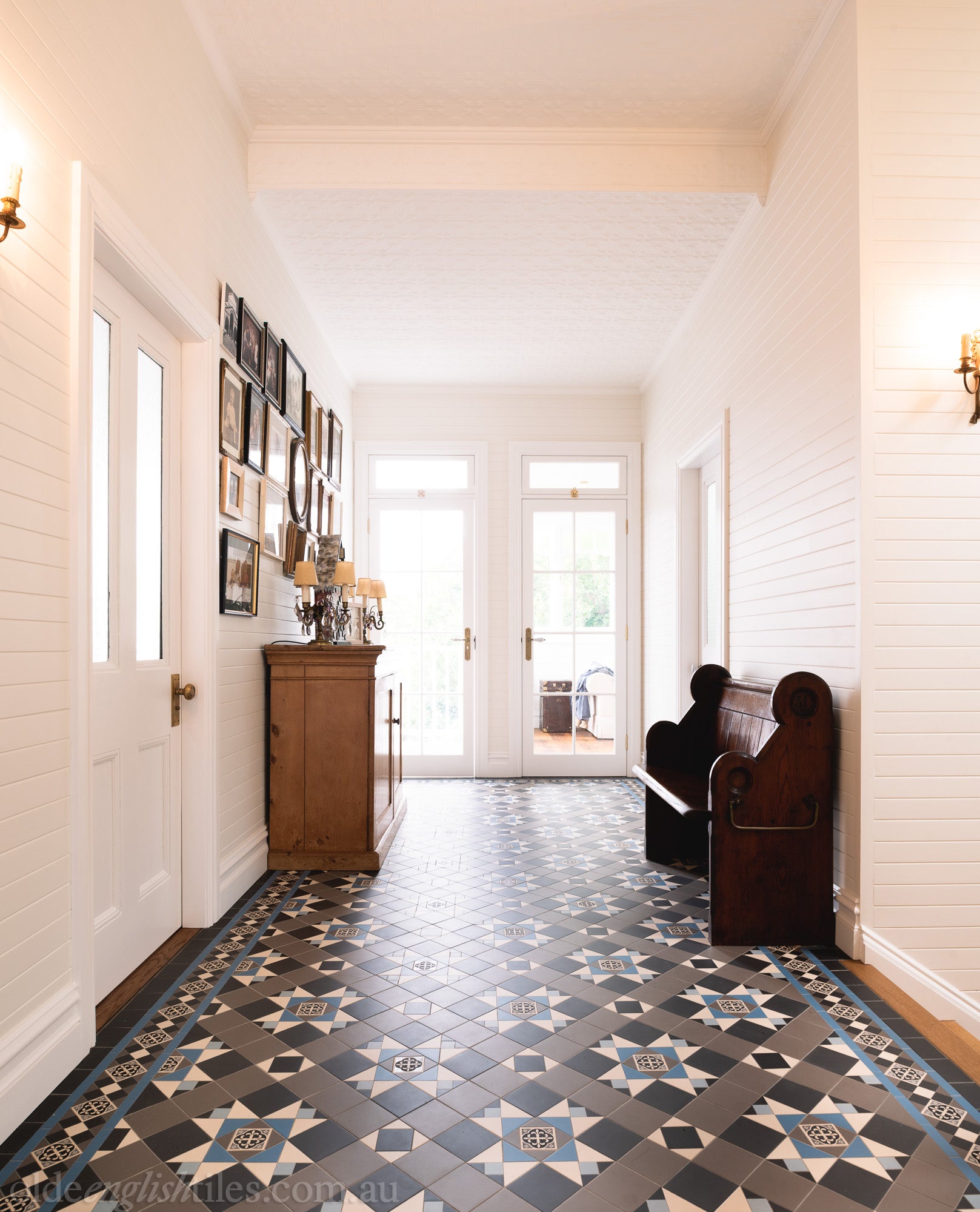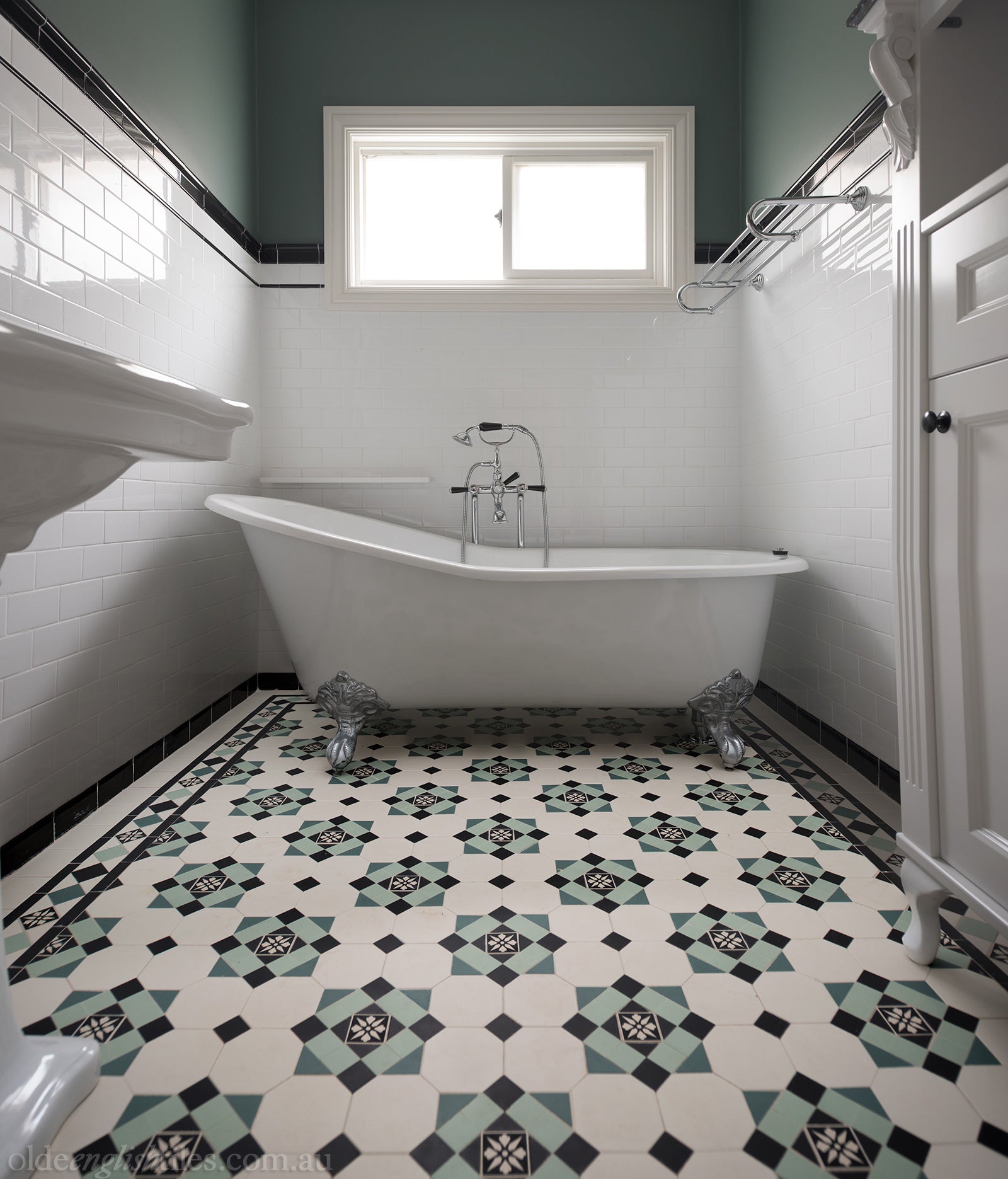
Patterned floor tiles have been a popular flooring choice for centuries, adding a touch of style and sophistication to any space. Not only do they provide a unique aesthetic appeal, but they are also durable and versatile, making them an excellent choice for high-traffic areas like kitchens, bathrooms, and entryways. With so many different styles, patterns, and materials to choose from, selecting the right patterned floor tiles for your home or business can seem overwhelming. That's why we've created the ultimate guide to patterned floor tiles, which covers everything you need to know about style, function, and installation. Whether you're looking to add a touch of elegance to your home or create a unique look for your business, this guide will help you make informed decisions and create the perfect space.
Table Of Contents:
- What are the patterned floor tiles?
- What are the benefits of using patterned floor tiles in a home or business?
- What are the different types of patterned floor tiles available in the market?
- How do I choose the right patterned floor tiles for my space?
- Are patterned floor tiles more expensive than regular tiles?
- Can patterned floor tiles be used in outdoor spaces like patios or gardens?
- How do I install patterned floor tiles? Can I do it myself or do I need a professional?
- How do I clean and maintain my patterned floor tiles?
- Are there any specific design trends in patterned floor tiles right now?
- Can patterned floor tiles be used in combination with other types of flooring?
What are the patterned floor tiles?

Patterned floor tiles are a type of flooring material that features intricate and decorative patterns on the surface. These tiles can be made from a variety of materials, including ceramic, porcelain, marble, and natural stone, and are available in an array of colours, shapes, and sizes. Patterned floor tiles can be used in a variety of settings, from residential to commercial spaces, and are a popular choice for areas like kitchens, bathrooms, hallways, and entryways. They offer a unique and stylish alternative to traditional flooring options, adding visual interest and texture to any space. Additionally, patterned floor tiles are known for their durability and are easy to clean and maintain, making them a practical and functional choice for any home or business.
What are the benefits of using patterned floor tiles in a home or business?
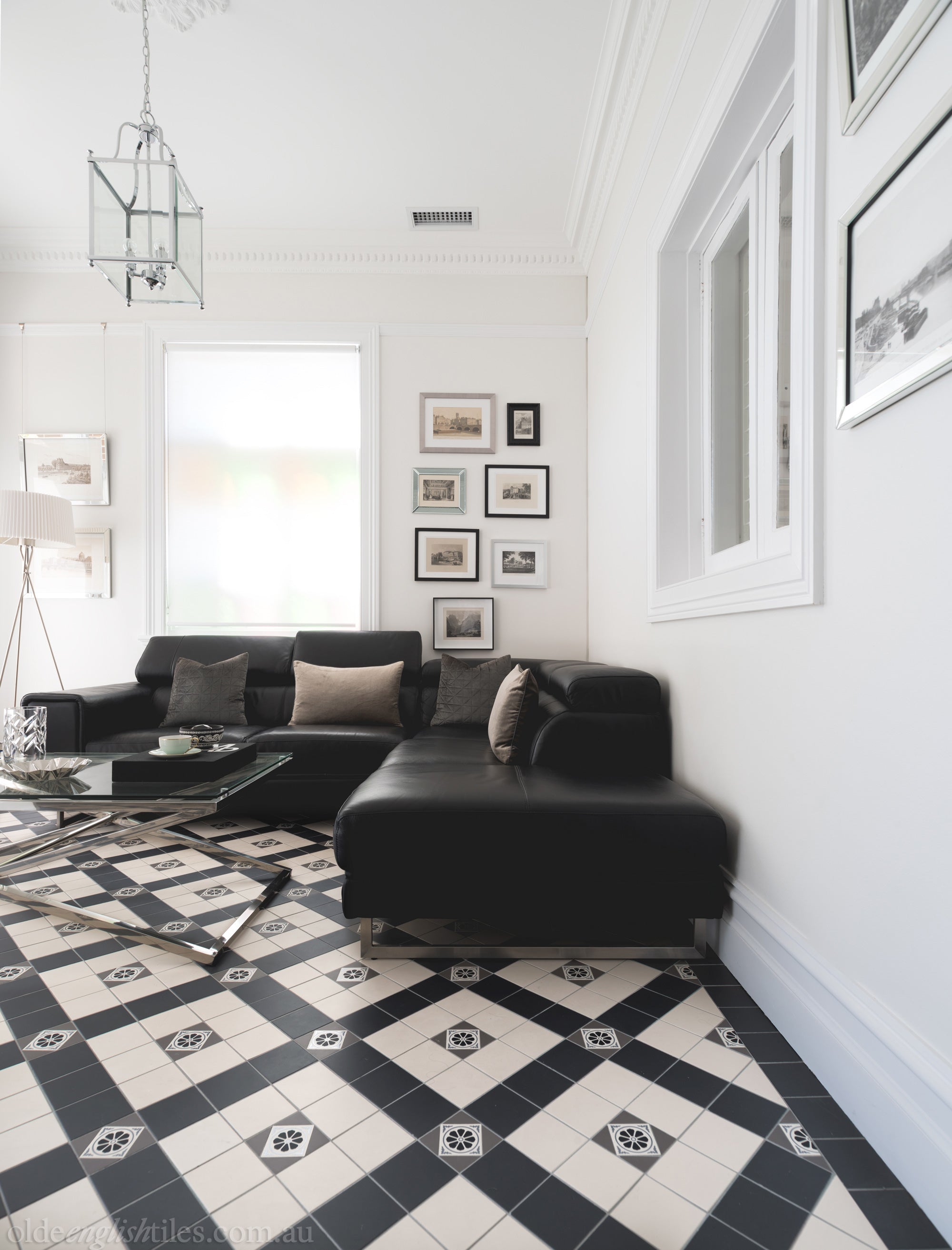
There are several benefits to using patterned floor tiles in a home or business. Here are some of the most notable advantages:
- Aesthetic appeal: Patterned floor tiles add visual interest and texture to any space, making them an excellent choice for creating a unique and stylish look. They can be used to complement other design elements in a room, such as wall colour or furniture, and can create a focal point or enhance the overall aesthetic appeal of the space.
- Durability: Patterned floor tiles are known for their durability and resilience, making them ideal for high-traffic areas. They can withstand heavy foot traffic, spills, and stains, and are less likely to crack or chip than other types of flooring.
- Versatility: Patterned floor tiles come in a wide range of colours, patterns, and materials, making them a versatile choice for any space. They can be used to create a modern or traditional look, and can be customized to suit a variety of design styles.
- Easy maintenance: Patterned floor tiles are easy to clean and maintain, requiring only regular sweeping and mopping to keep them looking their best. Most tiles are water-resistant, making them a suitable choice for wet areas like bathrooms and kitchens.
- Value: Installing patterned floor tiles can increase the value of a home or business, as they are a desirable feature for many buyers. They are also a long-lasting investment, as they can maintain their aesthetic appeal and functionality for many years.
What are the different types of patterned floor tiles available in the market?
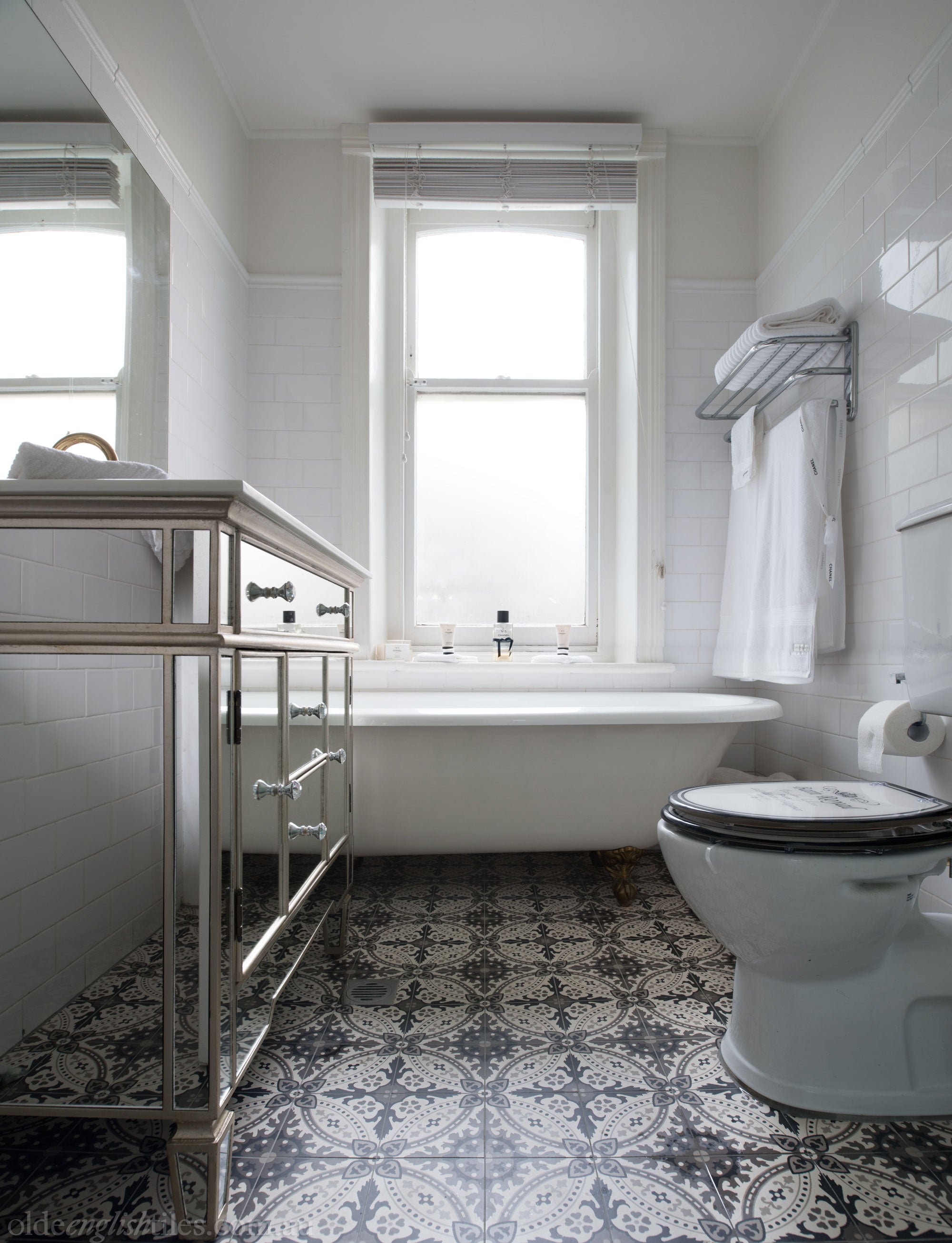
There are several types of patterned floor tiles available in the market, each with their own unique characteristics and features. Here are some of the most popular types:
Ceramic tiles
These are the most common type of patterned floor tiles, made from clay and other natural materials. Ceramic tiles are available in a variety of colours, patterns, and sizes, making them a versatile choice for any space.
Porcelain tiles
Porcelain tiles are similar to ceramic tiles but are denser and more durable, making them ideal for high-traffic areas. They come in a range of colours and patterns and are suitable for indoor and outdoor use.
Natural stone tiles
Natural stone tiles, such as marble, granite, and travertine, are a luxurious and timeless option for patterned flooring. They come in a range of patterns and colours, each with its own unique character and charm.
Vinyl tiles
Vinyl tiles are a cost-effective alternative to natural stone or ceramic tiles. They are available in a wide range of colours and patterns, including those that mimic the look of other materials like wood or stone.
Cement tiles
Cement tiles are known for their bold and colourful patterns, making them a popular choice for decorative flooring. They are made from a mixture of cement, sand, and pigments and are available in a range of colours and designs.
How do I choose the right patterned floor tiles for my space?
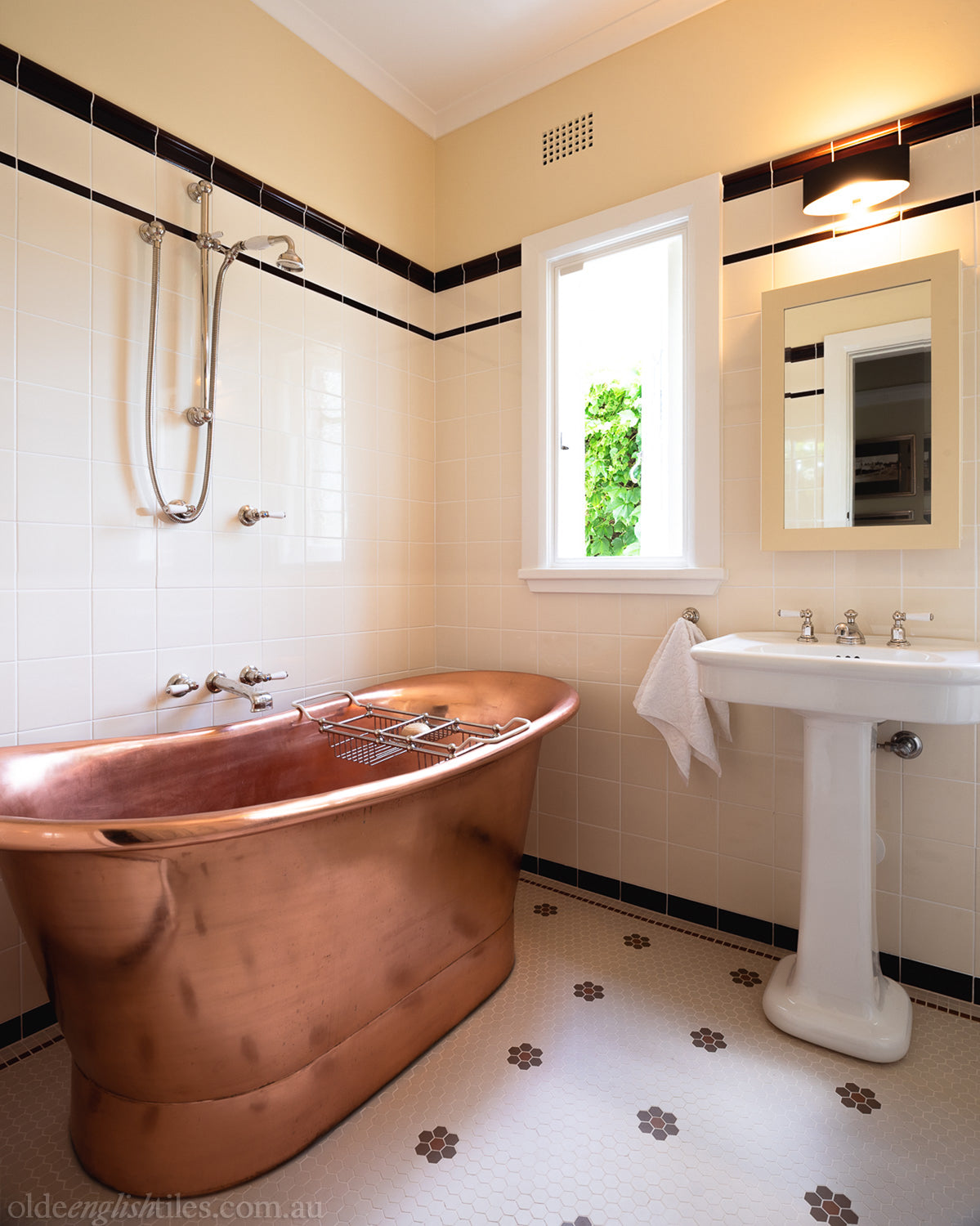
Choosing the right patterned floor tiles for your space can seem like a daunting task, but with a little planning and consideration, you can find the perfect tiles for your needs. Here are some tips to help you choose the right patterned floor tiles:
Consider the space: Think about the room you are planning to tile and its function. If it's a high-traffic area like a hallway or kitchen, you may want to choose durable materials like porcelain or natural stone. If it's a smaller room like a bathroom or laundry, you may want to choose lighter coloured tiles to make the space feel larger.
Determine the style: Consider the style and aesthetic of the room you are tiling. Are you going for a modern, traditional or eclectic look? Choose tiles that complement the existing design elements in the room.
Think about colour and pattern: Look for tiles that incorporate colours and patterns that complement the overall design scheme of the room. If the walls and furniture are neutral, consider adding a pop of colour or a bold pattern with the tiles.
Consider the size and shape: The size and shape of the tiles you choose can impact the look and feel of the space. Larger tiles can make a room feel more spacious, while smaller tiles can create a sense of texture and visual interest.
Consult with a professional: If you're unsure about which tiles to choose, consult with a professional designer or tile installer. They can provide expert advice and help you choose the right tiles for your space, based on your needs and preferences.
Are patterned floor tiles more expensive than regular tiles?
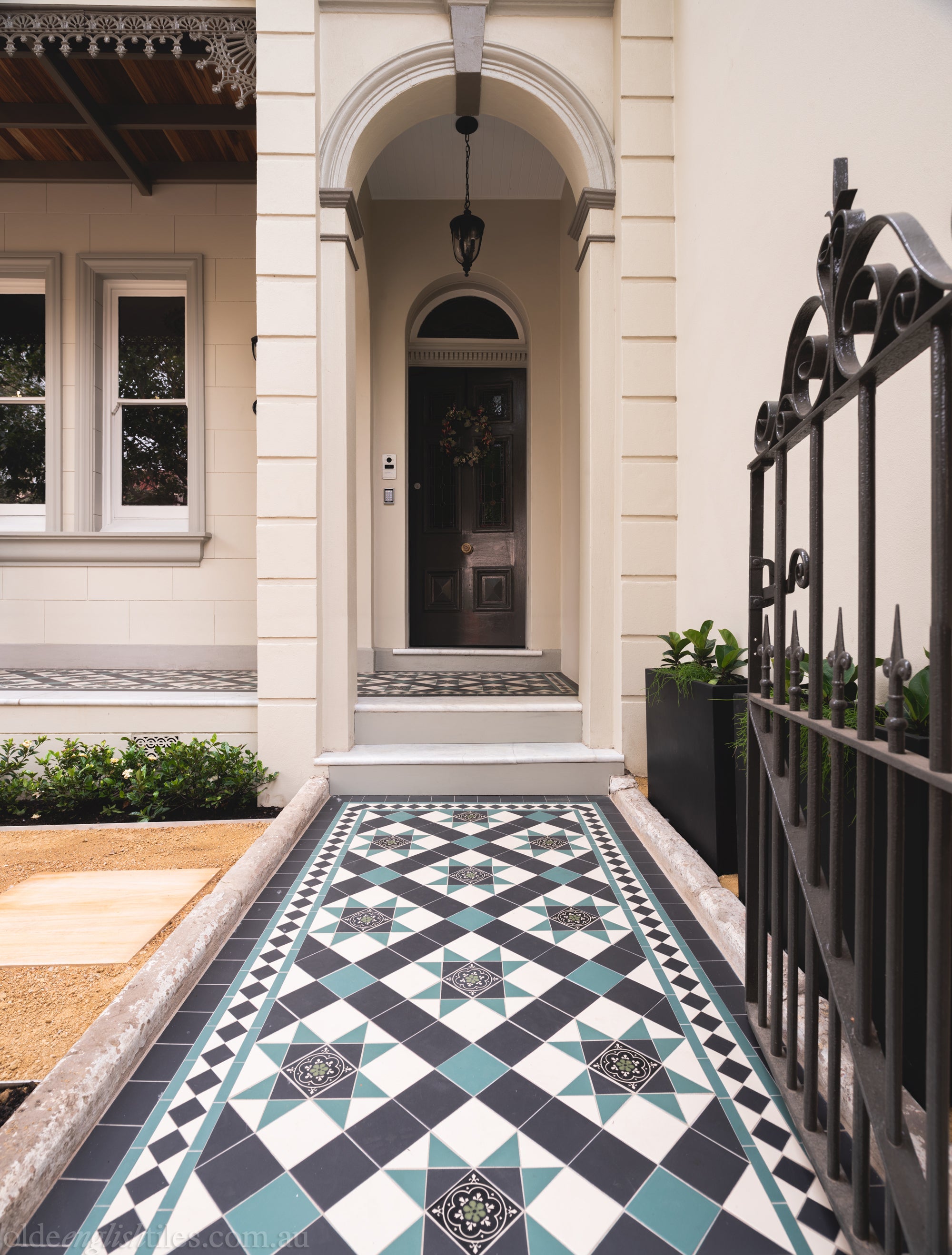
The cost of patterned floor tiles can vary depending on the type of material used, the size of the tiles, the complexity of the pattern, and the manufacturer. In general, patterned floor tiles can be more expensive than regular tiles, as they require a more complex manufacturing process and often involve unique designs or patterns.
For example, natural stone tiles with intricate patterns can be more expensive than basic ceramic or porcelain tiles. Similarly, custom-designed cement tiles or hand-painted ceramic tiles can be more expensive due to the additional labour involved in their production.
However, it's important to note that the cost of patterned floor tiles can also depend on the quality and durability of the material used. In some cases, investing in high-quality patterned floor tiles can be a cost-effective choice in the long run, as they are often more durable and long-lasting than cheaper alternatives.
Ultimately, the cost of patterned floor tiles will depend on the specific material and design you choose. It's important to do your research and shop around to find the best quality tiles within your budget.
Can patterned floor tiles be used in outdoor spaces like patios or gardens?

Yes, patterned floor tiles can be used in outdoor spaces like patios or gardens. However, it's important to choose tiles that are specifically designed for outdoor use, as they need to be able to withstand exposure to the elements.
Some of the most popular outdoor tiles include natural stone tiles like slate, granite, or limestone, as well as porcelain or ceramic tiles that are specifically designed for outdoor use. These tiles are often treated to make them slip-resistant and to prevent them from becoming damaged by exposure to water or UV rays.
When choosing patterned floor tiles for outdoor use, it's also important to consider the size and shape of the tiles. Larger tiles can be a good choice for outdoor areas, as they can help to create a seamless and cohesive look. It's also important to choose tiles that are easy to clean and maintain, as outdoor areas can be more prone to dirt and debris.
Overall, with the right tiles and proper installation, patterned floor tiles can be a beautiful and functional choice for outdoor spaces like patios or gardens. However, it's important to consult with a professional tile installer to ensure that the tiles are installed correctly and are appropriate for outdoor use.
How do I install patterned floor tiles? Can I do it myself or do I need a professional?
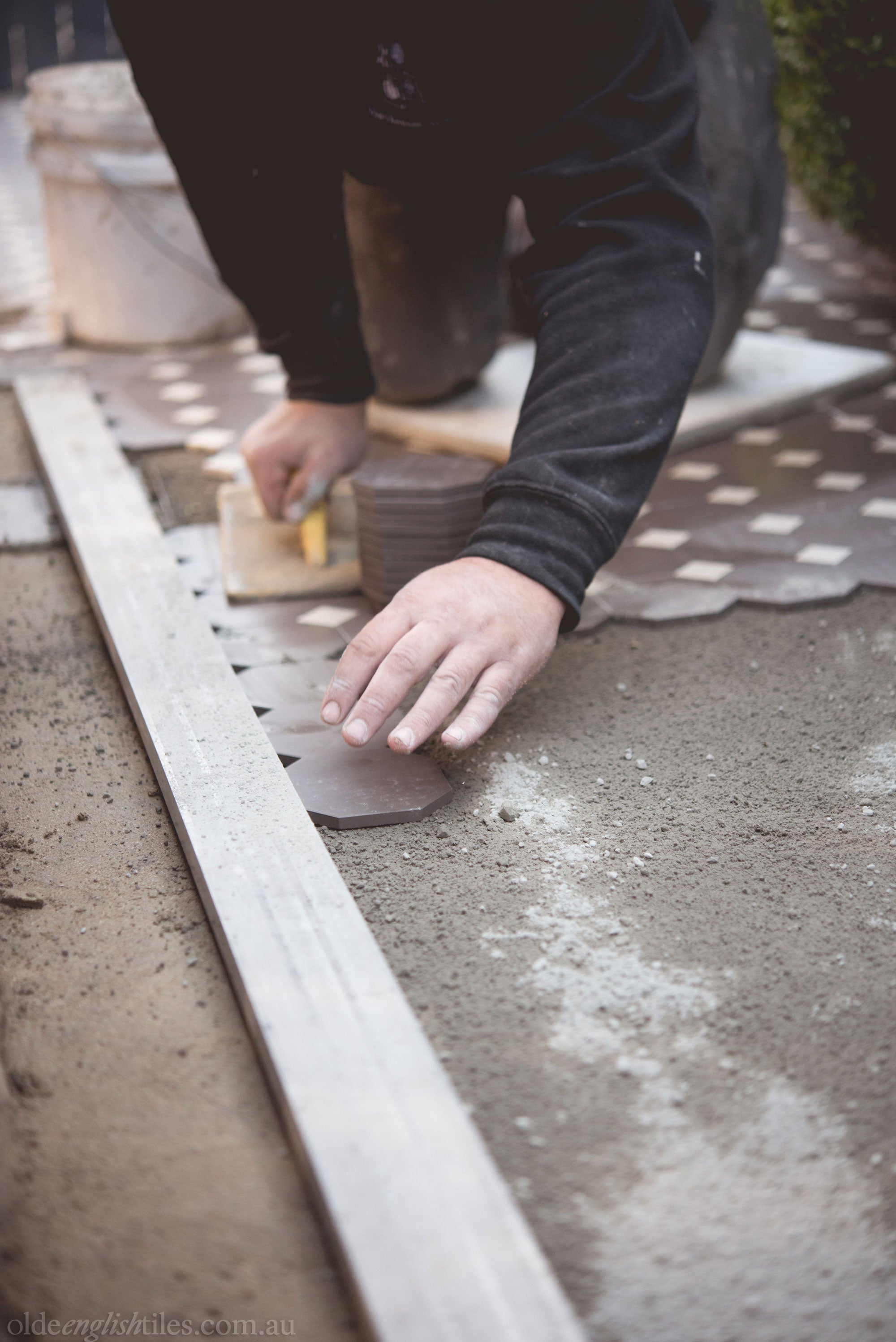
Installing patterned floor tiles can be a complex process, and it's generally recommended to hire a professional tile installer to ensure that the job is done correctly. However, if you have experience with DIY projects and are comfortable with the necessary tools and materials, it is possible to install patterned floor tiles yourself. Here are the basic steps involved in installing patterned floor tiles:
- Prepare the surface: The surface you'll be tiling should be clean, dry, and free of any debris or loose material. If necessary, apply a primer or leveling compound to create a smooth and even surface.
- Plan the layout: Plan the layout of the tiles before you start installing them. Use a chalk line or other straightedge to mark the center of the room, and lay out the tiles from there to ensure that the pattern is even and symmetrical.
- Cut the tiles: Use a tile cutter or wet saw to cut any tiles that need to be trimmed to fit around the edges of the room or other obstacles.
- Apply the adhesive: Apply a thin layer of tile adhesive to a small area of the floor, using a notched trowel to create ridges in the adhesive.
- Lay the tiles: Lay the tiles into the adhesive, pressing them firmly into place and using spacers to ensure that the grout lines are even and consistent.
- Grout the tiles: Once the adhesive has dried, remove the spacers and fill the gaps between the tiles with grout. Wipe away any excess grout with a damp sponge.
- Seal the tiles: If necessary, apply a sealant to protect the tiles from moisture and stains.
While it is possible to install patterned floor tiles yourself, it can be a time-consuming and challenging process. If you are not confident in your ability to install the tiles correctly, it's recommended to hire a professional tile installer to ensure that the job is done correctly and the tiles are installed safely and securely.
How do I clean and maintain my patterned floor tiles?
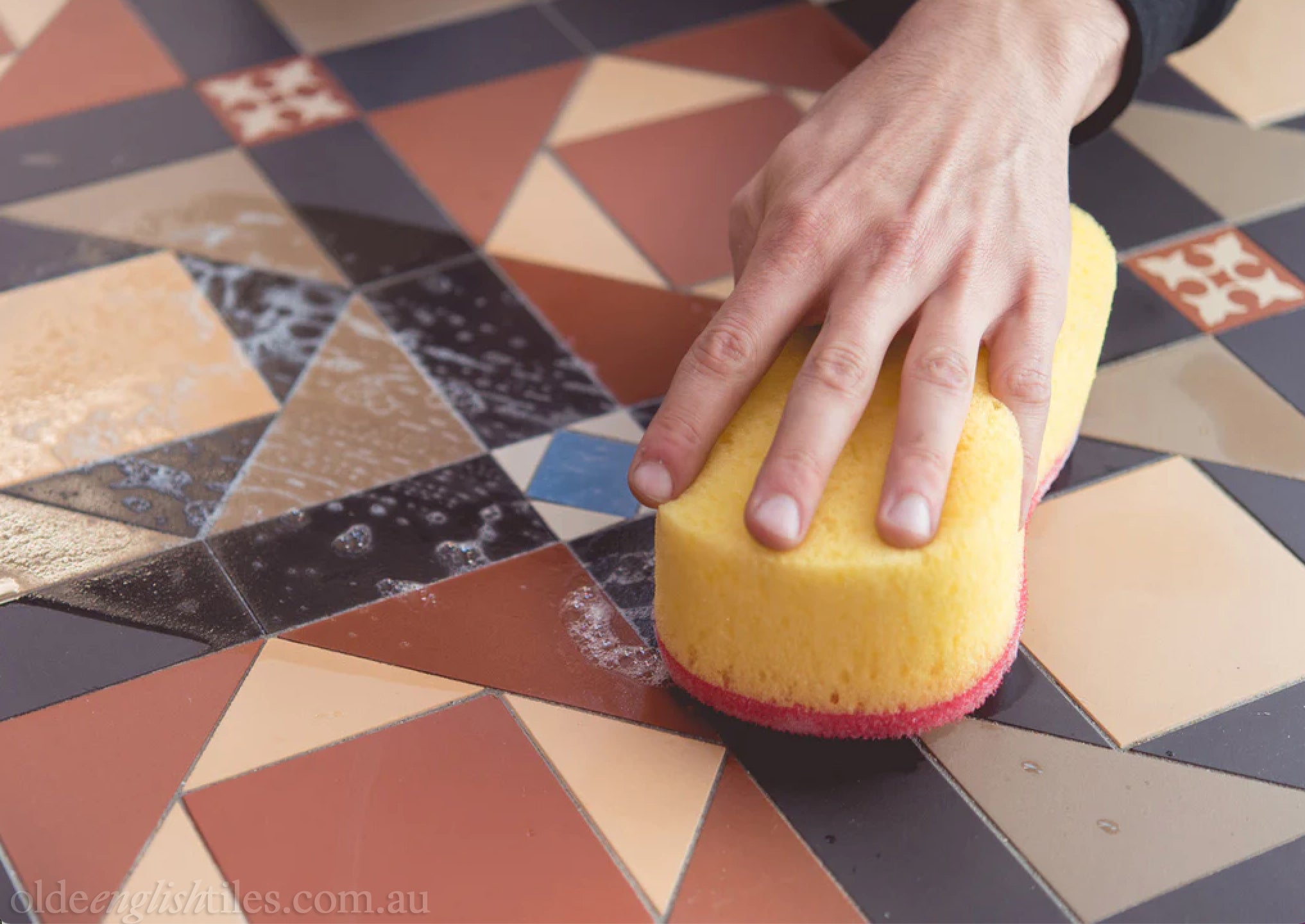
Proper cleaning and maintenance are essential for keeping your patterned floor tiles looking their best. Here are some tips for cleaning and maintaining your patterned floor tiles:
- Sweep or vacuum regularly: Dirt and debris can scratch the surface of your tiles, so it's important to sweep or vacuum your floors regularly to remove any loose dirt or dust.
- Use a pH-neutral cleaner: When mopping your floors, use a pH-neutral cleaner that is specifically designed for use on tile floors. Avoid using harsh or abrasive cleaners that can damage the surface of your tiles.
- Avoid standing water: Standing water can seep into the grout lines and cause damage to your tiles, so it's important to wipe up spills and avoid using excessive amounts of water when cleaning your floors.
- Clean up spills immediately: If you spill something on your tiles, clean it up immediately to prevent stains and damage to the surface of your tiles.
- Seal the tiles: Depending on the type of tiles you have, you may need to seal them periodically to protect them from stains and moisture.
- Avoid using abrasive tools: When cleaning your tiles, avoid using abrasive tools like steel wool or scrub brushes that can scratch the surface of your tiles.
- Use doormats: Place doormats at entrances to your home or business to help prevent dirt and debris from being tracked onto your tile floors.
By following these tips, you can help keep your patterned floor tiles looking their best for years to come. If you have any questions about cleaning or maintaining your tiles, consult with a professional tile installer or tile manufacturer for specific recommendations.
Are there any specific design trends in patterned floor tiles right now?

There are several design trends in patterned floor tiles that are popular right now. Here are a few:
- Geometric patterns: Geometric patterns are a popular trend in patterned floor tiles right now. These patterns feature bold, angular shapes and often incorporate contrasting colors for a dramatic effect.
- Encaustic-style tiles: Encaustic-style tiles are inspired by traditional cement tiles and feature intricate patterns and designs. They are often used to create a vintage or retro look in a space.
- Large-scale patterns: Large-scale patterned tiles are becoming increasingly popular, with designs that cover a larger surface area and create a bold statement in a space.
- Monochromatic color schemes: Monochromatic color schemes, featuring tiles in shades of a single color, are a popular trend in patterned floor tiles. These designs can create a subtle, sophisticated look in a space.
- Mix-and-match patterns: Mixing and matching different patterned tiles is a trend that allows for a more personalized and eclectic look. This trend involves using different patterns, colors, and sizes of tiles to create a unique and visually interesting design.
Overall, patterned floor tiles offer a wide range of design possibilities, and the current trends reflect a desire for bold, dramatic, and personalized designs.
Can patterned floor tiles be used in combination with other types of flooring?
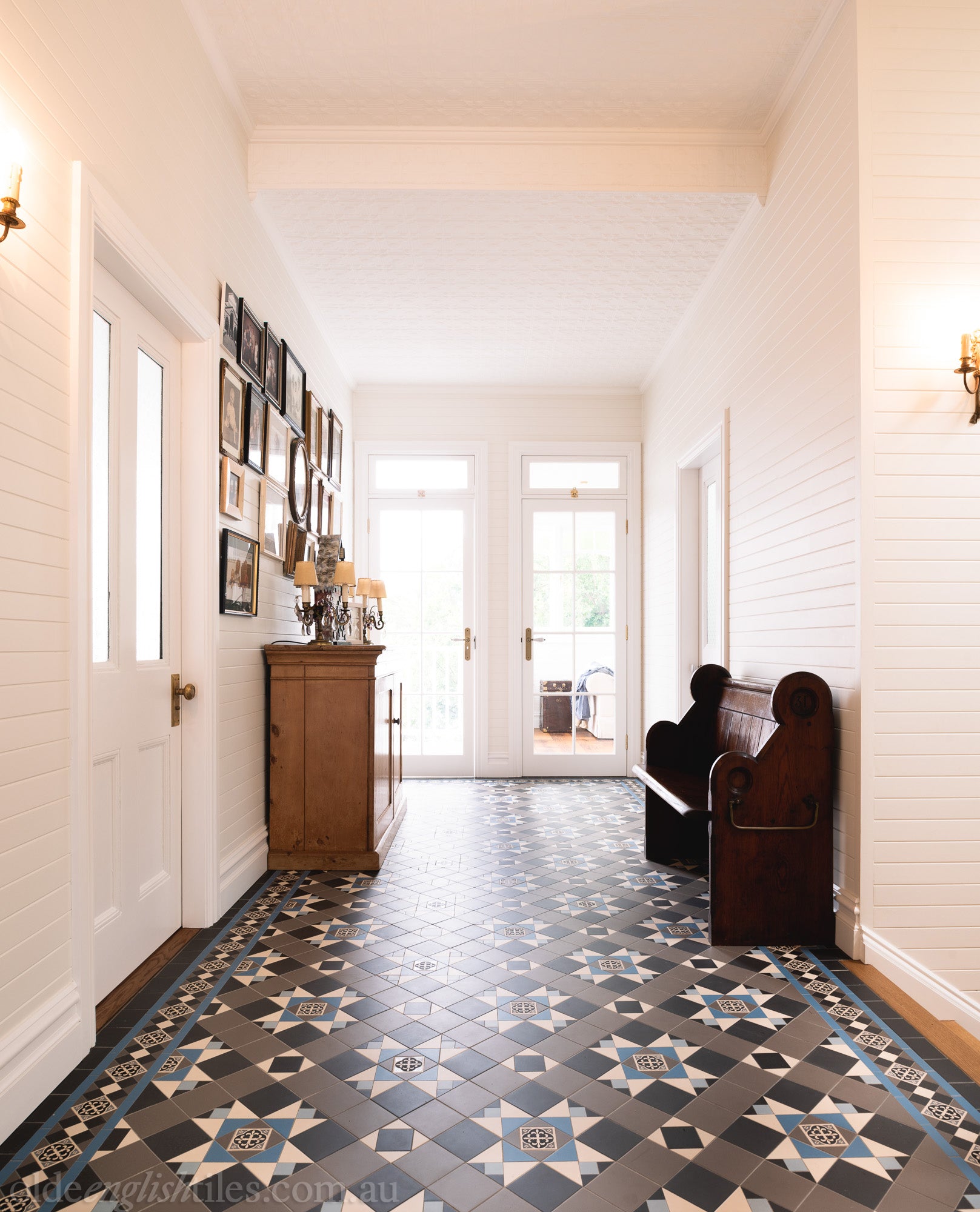
Yes, patterned floor tiles can be used in combination with other types of flooring to create a unique and visually interesting look. Here are some ways you can combine patterned floor tiles with other types of flooring:
- Border tiles: Use patterned tiles as a border around a room or as a transition between two types of flooring. This can create a defined boundary between different spaces or add visual interest to a room.
- Inlay tiles: Use patterned tiles as an inlay in a floor made of a different material, such as hardwood or carpet. This can create a focal point in a room and add texture and depth to the flooring.
- Feature tiles: Use patterned tiles as a feature in a room, such as in a foyer or entryway. This can create a statement piece and add character and personality to a space.
- Complementary tiles: Choose patterned tiles that complement the color and style of another type of flooring, such as a neutral-colored tile that pairs well with hardwood flooring. This can create a cohesive and harmonious look in a space.
When combining patterned floor tiles with other types of flooring, it's important to consider the overall design and color scheme of the space. The combination should be intentional and complement the style and function of the room. Consulting with a professional designer or tile installer can help ensure a successful and visually pleasing result.
Shop patterned floor tiles featured in this article
If you’ve spotted a tile design or pattern that takes your fancy, check out the quick links below to each of our collection pages. Still have questions? Make contact today to discuss the vision for your flooring project.
Tessellated Tiles
View all tessellated patterned floor tiles
Mosaic Tiles
View all mosaic patterned floor tiles
Encaustic Tiles
View all encaustic patterned floor tiles

